- (Answers) 3.3.12 Lab – Windows Task Manager
- 3.3.12 Lab – Windows Task Manager (Instructor Version)
- Objectives
- Background / Scenario
- Required Resources
- Instructions
- Part 1: Working in the Processes tab
- Part 2: Working in the Services tab
- Part 3: Working in the Performance tab
- Reflection Question
- 6.1.1.5 Lab – Task Manager in Windows 8 Answers
- 6.1.1.5 Lab – Task Manager in Windows 8 Answers
- Lab – Task Manager in Windows 8 ( Answers Version )
- Introduction
- Recommended Equipment
- Step 1: Work in the Applications tab of Task Manager.
- Step 2: Work in the Services tab of Task Manager.
- Step 3: Work in the Performance tab of Task Manager.
- Step 4: Work in the Processes tab of Task Manager.
- Reflection
- 6.1.1.5 Lab – Task Manager in Windows 7 and Vista Answers
- 6.1.1.5 Lab – Task Manager in Windows 7 and Vista Answers
- Lab – Task Manager in Windows 7 and Vista ( Answers Version )
- Introduction
- Recommended Equipment
- Step 1: Work in the Applications Tab of Windows Task Manager.
- Step 2: Work in the Services tab of Windows Task Manager.
- Step 3: Work in the Performance tab of Windows Task Manager.
- Step 4: Work in the Networking tab of Windows Task Manager.
- Step 5: Work in the Users tab of Windows Task Manager.
- Step 6: Work in the Processes tab of Windows Task Manager.
- Step 7: Change the fields that are displayed in the Windows Task Manager.
- Reflection
(Answers) 3.3.12 Lab – Windows Task Manager
3.3.12 Lab – Windows Task Manager (Instructor Version)
Instructor Note: Red font color or gray highlights indicate text that appears in the instructor copy only.
Objectives
In this lab, you will explore Task Manager and manage processes from within Task Manager.
- Part 1: Working in the Processes tab
- Part 2: Working in the Services tab
- Part 3: Working in the Performance tab
Background / Scenario
The Task Manager is a system monitor program that provides information about the processes and programs running on a computer. It also allows the termination of processes and programs and modification of process priority.
Required Resources
- A Windows PC with internet access
Instructions
Part 1: Working in the Processes tab
a. Open a command prompt and a web browser.
Microsoft Edge is used in this lab; however, any web browser will work. Just substitute your browser name whenever you see Microsoft Edge.
b. Right-click the Task bar to open Task Manager. Another way to open the Task Manager is to press Ctrl-Alt-Delete to access the Windows Security screen and select Task Manager.
c. Click More details to see all the processes that are listed in the Processes tab.
d. Expand the Windows Command Processor heading.
What is listed under this heading?
e. There are three categories of processes listed in the Processes tab: Apps, Background processes, and Windows processes.
- The Apps are the applications that you have opened, such as Microsoft Edge, Task Manager, and Windows Command Processor, as shown in the figure above. Other applications that are opened by the users, such as web browsers and email clients, will also be listed here.
- The Background processes are executed in the background by applications that are currently open.
- The Windows processes are not shown in the figure. Scroll down to view them on your Windows PC. Windows processes are Microsoft Windows services that run in the background.
Some of the background processes or Windows processes may be associated with foreground processes. For example, if you open a command prompt window, the Console Window Host process will be started in the Windows process section, as shown below.
f. Right-click Console Window Host and select Properties.
What is the location of this filename and location of this process?
g. Close the command prompt window.
What happens to Windows Command Processor and Console Window Host when the command prompt window is closed?
h. Click the Memory heading. Click the Memory heading a second time.
What effect does this have on the columns?
i. Right-click on the Memory heading, and then select Resource values > Memory > Percents.
What affect does this have on the Memory column?
How could this be useful?
j. In the Task Manager, click the Name heading.
k. Double-click the Microsoft Edge.
l. Return to the Task Manager and right-click Microsoft Edge. Select End task.
What happens to the web browser windows?
Part 2: Working in the Services tab
In the Task Manager window, click the Services tab. Use the scroll bar on the right side of the Services window to view all the services listed.
What statuses are listed?
Part 3: Working in the Performance tab
a. In the Task Manager window, click the Performance tab.
How many threads are running?
How many processes are running?
b. Click the Memory in the left panel of the Performance tab.
What is the total physical memory (MB)?
What is the available physical memory (MB)?
How much physical memory (MB) is being used by the computer?
c. Click the Ethernet Chart in the left panel of the Performance tab.
What is the link speed?
What is the IPv4 address of the PC?
d. Click Open Resource Monitor to open the Resource Monitor utility from the Performance tab in Task Manager.
Reflection Question
Why is it important for an administrator to understand how to work within the Task Manager?
6.1.1.5 Lab – Task Manager in Windows 8 Answers
6.1.1.5 Lab – Task Manager in Windows 8 Answers
Lab – Task Manager in Windows 8 ( Answers Version )
Introduction
In this lab, you will explore Task Manager and manage processes from within Task Manager.
Recommended Equipment
The following equipment is required for this exercise:
- A computer running Windows 8
Step 1: Work in the Applications tab of Task Manager.
- Log on to Windows as an administrator.
- Open a browser and a folder.
- Click Start, and type task manager. Press Enter to bring up the Task Manager utility.
6.1.1.5 Lab – Task Manager in Windows 8 Answers 01
Note: For Windows 8.0, bring up the charms menu and then click on the search icon. Type task manager and press Enter to open the Task Manager utility.
Click Fewer details to view the list of open applications.
6.1.1.5 Lab – Task Manager in Windows 8 Answers 02
6.1.1.5 Lab – Task Manager in Windows 8 Answers 03
What happened?
____________________________________________________________________________________
The browser window closed, and it is no longer listed in Task Manager.
Step 2: Work in the Services tab of Task Manager.
- Click More Details at the bottom-left corner of Task Manager.
6.1.1.5 Lab – Task Manager in Windows 8 Answers 04
6.1.1.5 Lab – Task Manager in Windows 8 Answers 05
What statuses are listed?
____________________________________________________________________________________
Stopped and Running.
Step 3: Work in the Performance tab of Task Manager.
- Click the Performance tab.
6.1.1.5 Lab – Task Manager in Windows 8 Answers 06
How many threads are running?
____________________________________________________________________________________
Answer may vary. The example displays 491.
How many processes are running?
____________________________________________________________________________________
Answer may vary. The example displays 37.
Click on the Memory Chart in the left panel of the Performances tab.
6.1.1.5 Lab – Task Manager in Windows 8 Answers 07
What is the total physical memory (MB)?____________________________________________________________________________________
Answer may vary. The example shows 2GB (above memory chart on right).
What is the available physical memory (MB)?____________________________________________________________________________________
Answer may vary. The example displays 1.3 GB.
How much physical memory (MB) is being used by the computer?____________________________________________________________________________________
Answer may vary. 669 MB.
Click the Ethernet Chart in the left panel of the Performances tab.
6.1.1.5 Lab – Task Manager in Windows 8 Answers 08
What is the link speed?
____________________________________________________________________________________
Answer may vary. The example shows that it is a Gigabit Network Connection.
What is the IPv4 address of the PC?
____________________________________________________________________________________
Answer may vary. The examples shows 192.168.55.60.
Note: You can click Open Resource Monitor to bring up the Resource Monitor utility from the Performance tab in Task Manager.
Step 4: Work in the Processes tab of Task Manager.
- Click the Processes tab.
6.1.1.5 Lab – Task Manager in Windows 8 Answers 09
6.1.1.5 Lab – Task Manager in Windows 8 Answers 10
What effect does this have on the columns?____________________________________________________________________________________
____________________________________________________________________________________
____________________________________________________________________________________
Clicking the Memory heading causes the processes to be sorted by the amount of memory each process is using. Each time you click the Memory heading, it reverses the order (largest to smallest, then smallest to largest).
 What affect does this have on the Memory column?____________________________________________________________________________________
What affect does this have on the Memory column?____________________________________________________________________________________ The column now displays memory usage in percentage values.
How could this be useful?
____________________________________________________________________________________
____________________________________________________________________________________
____________________________________________________________________________________
Displaying processes in this way can assist an administrator in determining what services may be causing memory issues by showing how much available memory is being used by each service.
Note: Internet Explorer is used in this lab. However, any browser will work. Just substitute your browser name whenever you see the Internet Explorer.
 The listed processes are divided by categories. What categories are listed?____________________________________________________________________________________
The listed processes are divided by categories. What categories are listed?____________________________________________________________________________________ Answers may vary. The example shows 3 categories: Apps, Background processes, and Windows processes.

Reflection
Why is it important for an administrator to understand how to work within the Task Manager?
Answers may vary. The Task Manager can be a valuable tool for an administrator when troubleshooting problems with a Windows PC. It provides information about CPU, memory, disk, and network usage. It also provides a way to end tasks or cancel processes.
6.1.1.5 Lab – Task Manager in Windows 7 and Vista Answers
Last Updated on December 3, 2018 by Admin
6.1.1.5 Lab – Task Manager in Windows 7 and Vista Answers
Learning with Cisco Netacad, there are many exams and lab activities to do. Some instructor require students to complete all Chapter exams, Pre-Test, Practices Final, Final Exam and Chapter Quiz. No mater what instructors want you to do, PremiumExam.net offers all exams and lab activities answers and solutions with clear explanation. Our Experts have verified all exam answers before we published to the website. We recommended you to chose any relevant chapter from the following:
| IT Essentials v6.0 | |||
| Assignments | Practice Quizzes | ||
| Answers | Online | Answers | Online |
| Chapter 6 Exam | Online | Chapter 6 Quiz | Online |
| Next Chapter | |||
| Chapter 7 Exam | Online | Chapter 7 Quiz | Online |
| Lab Activities Answers & Solution | |||
| 6.1.1.5 Lab – Task Manager in Windows 7 and Vista Answers | |||
| 6.1.1.5 Lab – Task Manager in Windows 8 Answers | |||
| 6.1.1.9 Lab – Install Third-Party Software in Windows 7 and Vista Answers | |||
| 6.1.1.9 Lab – Install Third-Party Software in Windows 8 Answers | |||
| 6.1.2.3 Lab – Create User Accounts in Windows 7 and Vista Answers | |||
| 6.1.2.3 Lab – Create User Accounts in Windows 8 Answers Answers | |||
| 6.1.2.5 Lab – Configure Browser Settings in Windows 7 and Vista Answers | |||
| 6.1.2.5 Lab – Configure Browser Settings in Windows 8 Answers | |||
| 6.1.2.12 Lab – Manage Virtual Memory in Windows 7 and Vista Answers | |||
| 6.1.2.12 Lab – Manage Virtual Memory in Windows 8 Answers | |||
| 6.1.2.14 Lab – Device Manager in Windows 7 and Vista Answers | |||
| 6.1.2.14 Lab – Device Manager in Windows 8 Answers | |||
| 6.1.2.16 Lab – Region and Language Options in Windows 7 and Vista Answers | |||
| 6.1.2.16 Lab – Region and Language Options in Windows 8 Answers | |||
| 6.1.3.7 Lab – Monitor and Manage System Resources in Windows 7 and Vista Answers | |||
| 6.1.3.7 Lab – Monitor and Manage System Resources in Windows 8 Answers | |||
| 6.1.4.2 Lab – Hard Drive Maintenance in Windows 7 and Vista Answers | |||
| 6.1.4.2 Lab – Hard Drive Maintenance in Windows 8 Answers | |||
| 6.1.4.4 Lab – Manage System Files in Windows Answers | |||
| 6.1.5.4 Lab – Common Windows CLI Commands Answers | |||
| 6.1.5.6 Lab – System Utilities in Windows Answers | |||
| 6.3.1.2 Lab – Managing the Startup Folder in Windows 7 and Vista Answers | |||
| 6.3.1.2 Lab – Managing the Startup Folder in Windows 8 Answers | |||
| 6.3.1.5 Lab – Task Scheduler in Windows 7 and Vista Answers | |||
| 6.3.1.5 Lab – Task Scheduler in Windows 8 Answers | |||
| 6.3.1.7 Lab – System Restore in Windows 7 and Vista Answers | |||
| 6.3.1.7 Lab – System Restore in Windows 8 Answers | |||
Lab – Task Manager in Windows 7 and Vista ( Answers Version )
Introduction
In this lab, you will explore Task Manager and manage processes from within Task Manager.
Recommended Equipment
The following equipment is required for this exercise:
- A computer running Windows 7 or Vista
Step 1: Work in the Applications Tab of Windows Task Manager.
- Log on to Windows as an administrator.
- Open a browser and a folder.
- Click the desktop and press Ctrl-Alt-Delete > Start Task Manager > Applications tab.
6.1.1.5 Lab – Task Manager in Windows 7 and Vista Answers 01
6.1.1.5 Lab – Task Manager in Windows 7 and Vista Answers 02
6.1.1.5 Lab – Task Manager in Windows 7 and Vista Answers 03
What happens?
____________________________________________________________________________________
Notepad opens.
Navigate back to the Windows Task Manager, select Notepad, and click End Task.
6.1.1.5 Lab – Task Manager in Windows 7 and Vista Answers 04
What happens?
____________________________________________________________________________________
Step 2: Work in the Services tab of Windows Task Manager.
- Click the Services tab. Use the scroll bar on the right of the Services window to view all the services listed
6.1.1.5 Lab – Task Manager in Windows 7 and Vista Answers 05
What are the statuses listed?
____________________________________________________________________________________
Stopped and Running.
Step 3: Work in the Performance tab of Windows Task Manager.
- Click the Performance tab.
6.1.1.5 Lab – Task Manager in Windows 7 and Vista Answers 06
How many threads are running?
____________________________________________________________________________________
Answer may vary. The example displays 493.
How many processes are running?
____________________________________________________________________________________
Answer may vary. The example displays 41.
What is the total physical memory (MB)?____________________________________________________________________________________
Answer may vary. The example displays 2047.
What is the available physical memory (MB)?____________________________________________________________________________________
Answer may vary. The example displays 1155.
How much physical memory (MB) is being used by the system?____________________________________________________________________________________
Answer may vary. This can be calculated by subtracting Free Physical Memory from Total Physical Memory. In the example the calculation would be 2047 – 50 = 1,997MB.
Step 4: Work in the Networking tab of Windows Task Manager.
- Click the Networking tab.
6.1.1.5 Lab – Task Manager in Windows 7 and Vista Answers 07
What is the link speed?
____________________________________________________________________________________
Answer may vary. The examples displays 1 Gbps.
Step 5: Work in the Users tab of Windows Task Manager.
- Click the Users tab.
List all users and their status.
____________________________________________________________________________________
Answer may vary. The example displays one user, Administrator, with a status of active.
What actions can you perform on the user from this window?____________________________________________________________________________________
Three actions are displayed: Disconnect, Logoff, and Send Message. But only Disconnect and Logoff can be performed on the user.
Step 6: Work in the Processes tab of Windows Task Manager.
- Click the Processes tab.
- Check the checkbox Show processes from all users.
- Double-click the white border around the Processes tab. This changes the view of Windows Task Manager to compact mode.
Note: The User Account Control window may open in Vista asking for permission to continue. Click Continue.
- Click the heading Image Name. Click Image Name again.
What effect does this have on the columns?____________________________________________________________________________________
Places the names in alphabetical order. Each time you click the Image Name heading, it reverses the order (A to Z, then Z to A). - Click Memory (Private Working Set).
What affect does this have on the columns?____________________________________________________________________________________
Places the numbers in ascending or descending order. - Double-click the outside border again to return to tabs mode.
- Open a browser.
Note: Firefox is used in this lab. However, any browser will work. Just substitute your browser name whenever you see the word Firefox. - Return to the Windows Task Manager. Click Image Name so the list is in alphabetical order, then locate and select firefox.exe.
- Right-click firefox.exe > Set Priority.
What is the default priority for the browser?____________________________________________________________________________________
Normal. - Set the priority to Above Normal. Then click Change priority in the Windows Task Manager warning message.
Step 7: Change the fields that are displayed in the Windows Task Manager.
- Click View > Select Columns.
- The Select Process Page Columns window opens. Check Base Priority and click OK.
- Expand the width of the Windows Task Manager so the Base Priority column is visible.
List the name of the image that has a base priority of Above Normal?____________________________________________________________________________________
Firefox.exe.
Which image name has a base priority of N/A?____________________________________________________________________________________
System Idle Process. - Reset Firefox.exe base priority to normal. To do this, right-click firefox.exe > Set Priority > Normal > Change priority.
- Click View > Select Columns. Uncheck Base Priority and click OK.
- Close Firefox.
Is Firefox listed as a process?
____________________________________________________________________________________
No, it is removed from the list of processes when it closes. - Close all open windows.
Reflection
Why is it important for an administrator to understand how to work within the Windows Task Manager?
Answers may vary. The Windows Task Manager can be a valuable tool for an administrator when troubleshooting problems with a Windows PC. It provides information about memory, CPU usage, and processes. It also allows the administrator to control process priority levels, and provides a way to end tasks or cancel processes.
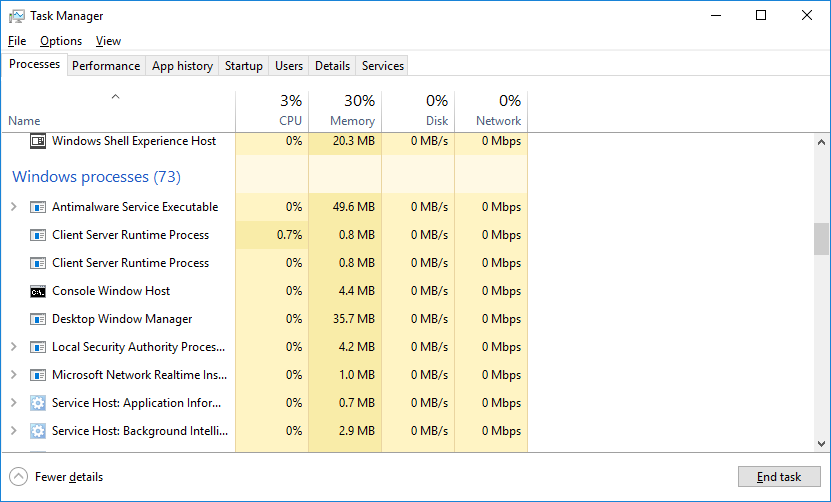


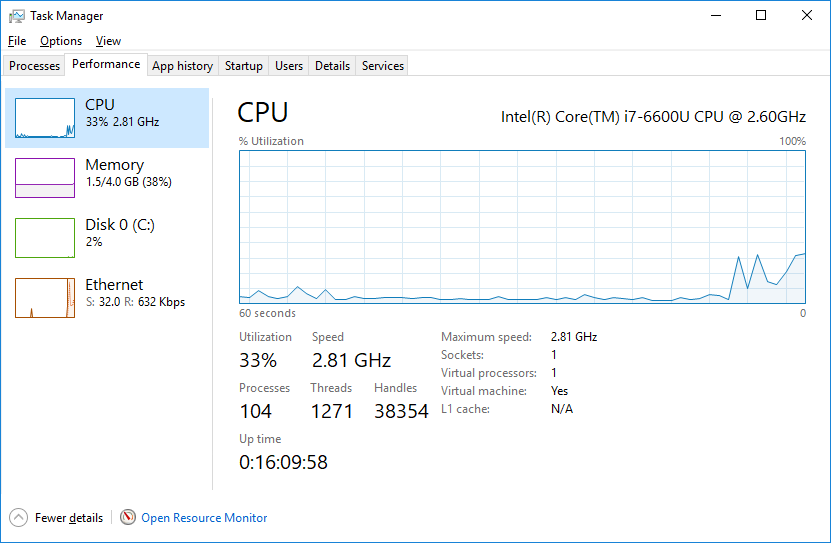
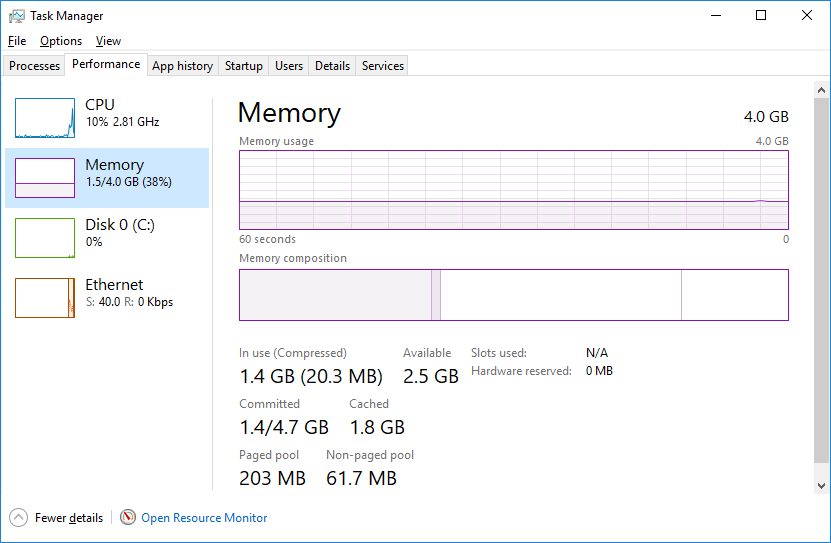
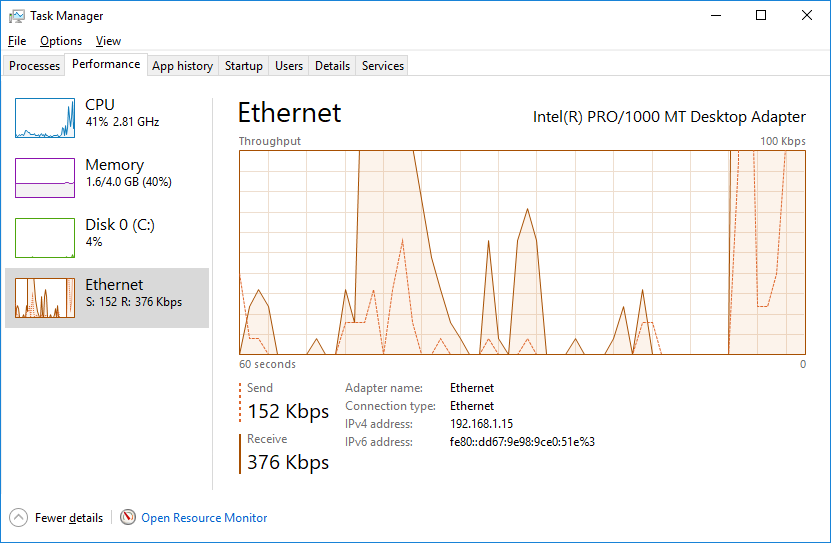
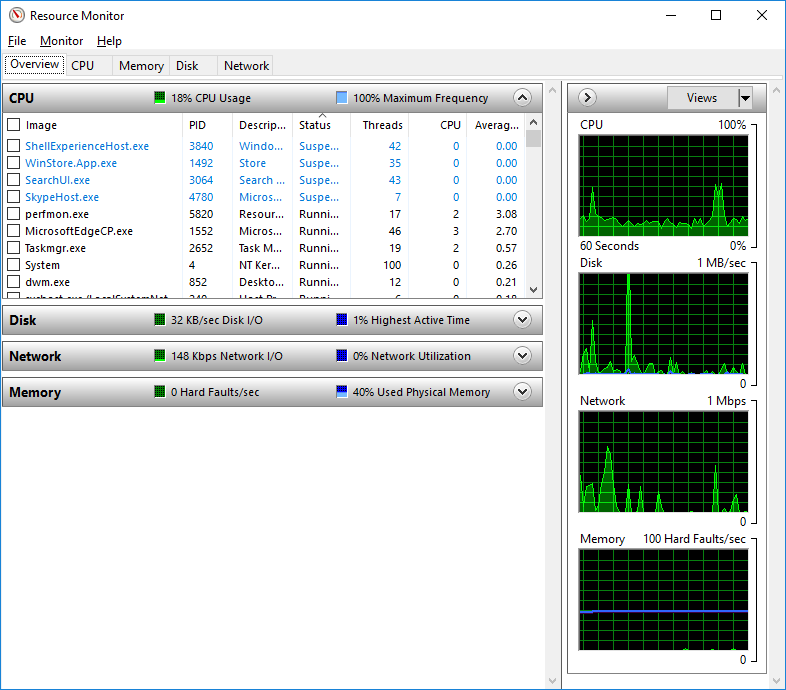

















 List all users and their status.
List all users and their status. 

 Note: The User Account Control window may open in Vista asking for permission to continue. Click Continue.
Note: The User Account Control window may open in Vista asking for permission to continue. Click Continue. What effect does this have on the columns?____________________________________________________________________________________
What effect does this have on the columns?____________________________________________________________________________________  What affect does this have on the columns?____________________________________________________________________________________
What affect does this have on the columns?____________________________________________________________________________________ 
 What is the default priority for the browser?____________________________________________________________________________________
What is the default priority for the browser?____________________________________________________________________________________ 


 List the name of the image that has a base priority of Above Normal?____________________________________________________________________________________
List the name of the image that has a base priority of Above Normal?____________________________________________________________________________________ 



